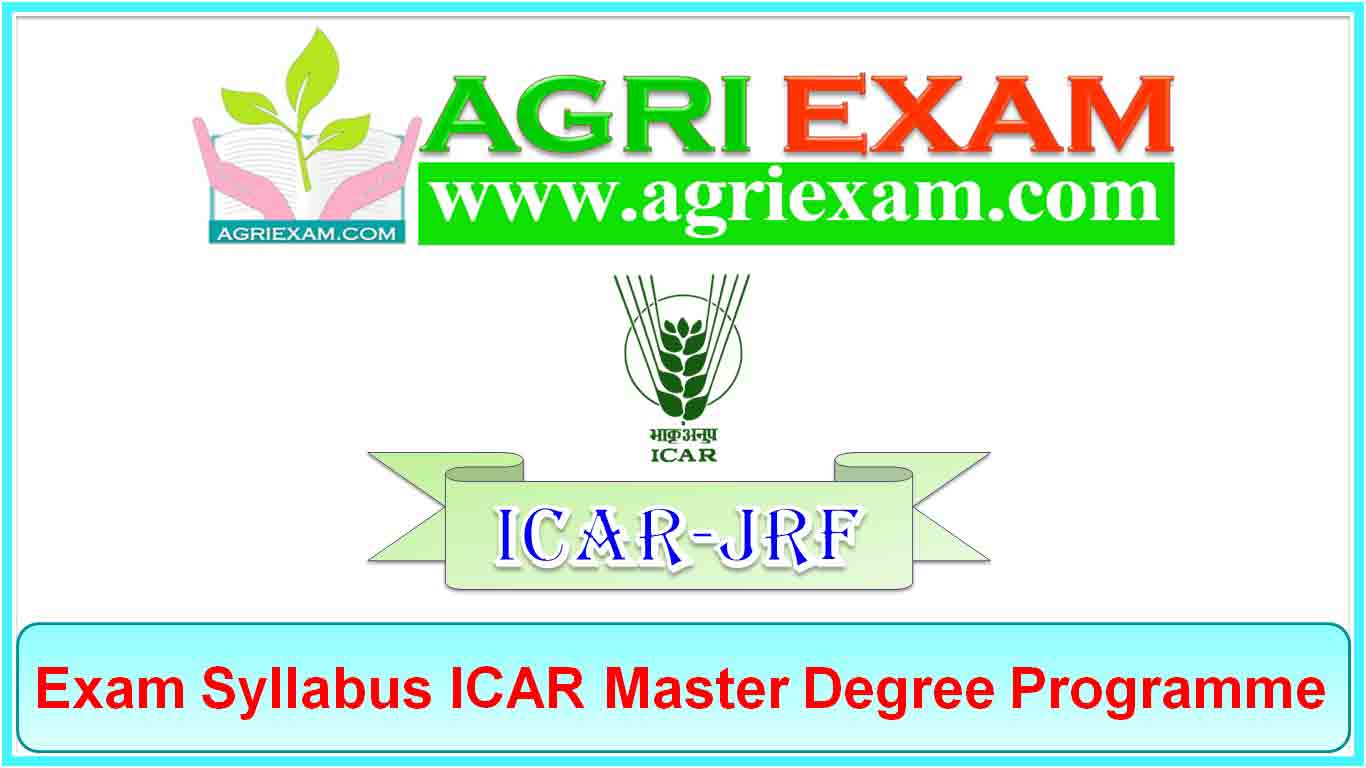MAJOR SUBJECT GROUP – Fisheries Science

ICAR JRF Syllabus Fisheries Science
Sub-Subjects:
16.1: Fisheries Sciences/Fish Environment Mgmt.
16.2: Fisheries Resource Management
16.3: Aquaculture
16.4: Fish Processing Technology/Fish PHT
16.5:Fish Physiology & & Biochemistry
16.6: Aquatic Animal Health Mgmt.
16.7: Fisheries Extension
16.8: Aquatic Env. Management
16.9: Fish Genetics/ Breeding / Biotechnology
16.10: Fish Nutrition & Feed Tech.
16.11: Fish Economics
16.12:Fish Engg.& Technology
UNIT-I: Classification and taxonomical characteristics of cultivable fisheries, crustaceans and molluscs. Fresh water, brackish water and marine fishery resources of India, marine fisheries of the world. Estuarine, lacustrine, brackish water and pond ecosystem. Population dynamics, fish stock, abundance methods and analysis. Conservation and management of fishery resources. Fisheries legislations and law of the Seas. Impact of over exploitation and climate change on fisheries resources.
UNIT-II: Reproduction and breeding behaviour in fishes and shellfishes, brood stock improvement, maturity and fecundity studies. Induced spawning methods and seed production, natural fish seed collection and rearing methods. Types of eggs and development of larval stages of fin fishes and shellfishes. Preparation and management of fresh water and brackish water fishponds. Cultivable species identification, introduction of exotic fishes in India. Culture methods: Pen and cage culture practices, crap and shrimp hatchery management, basic aspects of biotechnology in relation to fisheries.
UNIT-III: Important limnological, oceanographical and biological parameters in relation to fisheries of lotic and lentic waters, biological productivity and its impact on fisheries. Environmental impact assessment on fisheries in lentic and lotic waters. Biological parameters including energy flow, community ecology and aquatic association, biodiversity and its conservation, aquatic pollution and its management.
UNIT-IV: Common crafts and gears used for fish capture. Boat building material and demerits of wood, steel, aluminum, Ferro cement and FRP. Different types of fibres and netting materials and their characteristics, preservation of netting, parts of a trammel net, purse-scene, gill net and tuna long line. Food chemistry, fundamentals of microbiology. General methods of fish preservation and fishery by products. Canning and packaging techniques, processing and product development techniques.
UNIT-V: Introduction to fishery economics and concepts of cooperative, marketing and banking management. Supply v/s demand economics of hatchery management and fish culture operations. Profit maximization. Problems in estimating costs and returns in fisheries. WTO agreements in Fisheries sector, intellectual property rights (IPR) and international fish trade; Fisheries extension methods. Training and education needs in fisheries. Communication concepts, Modern tools of fishery extension education, participatory rural appraisal (PRA), Rapid rural appraisal (RRA), role of women in fisheries; Basics of statistics in fisheries and computer science.
ICAR JRF Syllabus Fisheries Science
j.r.f exam notice
Can I please get the previous year question papers of fisheries science in pdf format?
Can I get previous year question papers
Thank you🙏